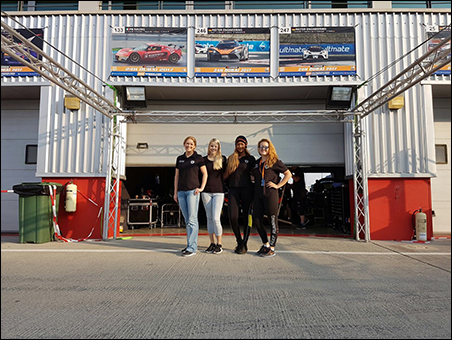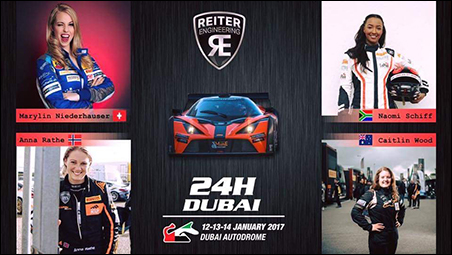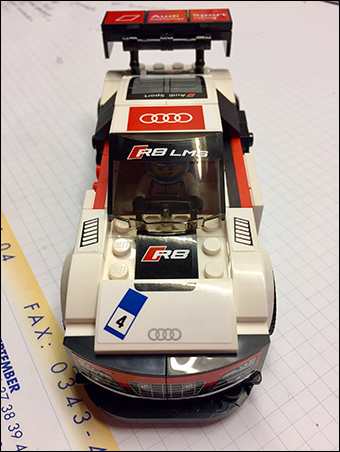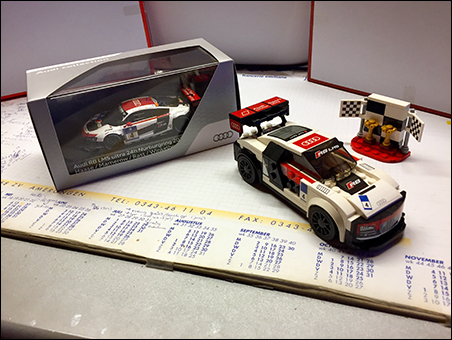Motorsport is a very giving sport. It not only provides us with weekend entertainment, it also gives us insight into technology, weekly strategic brainteasers, excitement, stuff to talk and write about, events to look forward to, new friends to share the fun with and, above all, heroes to support.
Often people find their first racing hero in formula 1. I’m guessing it’s because of the massive worldwide coverage of the series. When I was young, I was no exception to the rule. My first motorsport hero was Finnish F1 driver Mika Häkkinen. (Yes. I know. My childhood dates back to the stone age…) I was very fond of Mika. He always came across as fast, focused, and fair, all qualities I believed were important for a driver to have. There was just one downside to Mika. He was male. As were all the other F1 drivers of his time. Every. Single. One. Of. Them.
As a little girl, there were many days I wished for a female F1 driver. The reasons for that were varied. Sometimes I wished so, because I thought that maybe then the boys in my class would stop pestering me that racing wasn’t for girls. Sometimes I wished so, because I wanted someone to prove the adult men wrong when they told me that women weren’t capable of doing such a job. And sometimes I wished so, simply because I wanted to see someone in the sport who was a bit like me.

Photo borrowed from @marylinracing (twitter)
It didn’t feel like it at the time, but looking back I think that last reason was the most important one of all. Research in the field of psychology has proven time and time again that, in many ways, representation is everything to a human being. We have a basic need to feel recognised. We have an innate desire to see people who we consider to be ‘like us’. When we don’t, we feel disconnected and alone. When we do, it makes us feel like we belong. There are few things that can make a person happier. This is illustrated perfectly by a famous YouTube video of a girl that is gifted a doll that has been customised to look like her. Recognising herself makes her cry in gratitude.
Although motorsport gave me many gifts during my childhood, representation was sadly never one of them. When I was a girl, the only women I ever saw on F1 coverage served as decoration. They wore high heels and make-up and risqué tops that showed off their cleavage. None of these things were ever me. I was always the no-boobs, no make-up girl with the flat shoes. (I probably always will be, by the way.) As a result, I always felt more drawn to the athletes of the sport; but with all the reminders of how they were doing “a man’s job”, I didn’t really feel represented by them either. I ended up hovering around the sport a bit, always enjoying it, but never feeling a real connection.
Having lived that as a girl, I can’t say how happy I am that times in motorsport are now finally a-changin’. Women are finally beginning to creep into motor racing from multiple directions and new female faces are popping up regularly. For this weekend’s Dubai 24 Hours, Reiter Engineering has even entered an all-female car for four of those new faces: Caitlin Wood from Australia, Anna Rathe from Norway, Naomi Schiff from South Africa, and Marylin Niederhauser from Switzerland.

Photo borrowed from @annarathe (twitter)
I am incredibly excited about this line up. These four women have come from all over the world, proving beyond doubt that racing talent in girls is now truly being fostered on all continents, and they’ve found a racing team in Reiter Engineering that will give them a chance to do mileage in a real, properly big event to improve their crafts. I have no words to describe how rarely that happens. There used to be another all-women car in the Dubai 24H, run by Las Moras for the Dutch Racing Divas, but they haven’t shown up to the event since 2015 and I honestly thought it would take ten years or more for another such car to surface. The fact that we already have another one so soon feels like nothing but a gift to me.
I’m not sure what goals the four Reiter women have set for this weekend, but I hope they’ll manage to meet them. If not for themselves, then for all the little girls around the globe who’ll be watching the race this weekend. They may not be numerous, but they exist. And they deserve to see themselves represented in motorsport as athletes. Just ask the little girl that still lives inside my heart, if you don’t believe me.
So crew of car #246, feel free to go and rock this thing!



